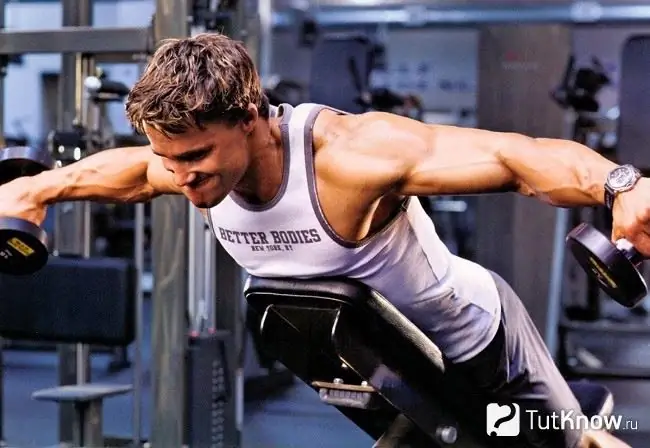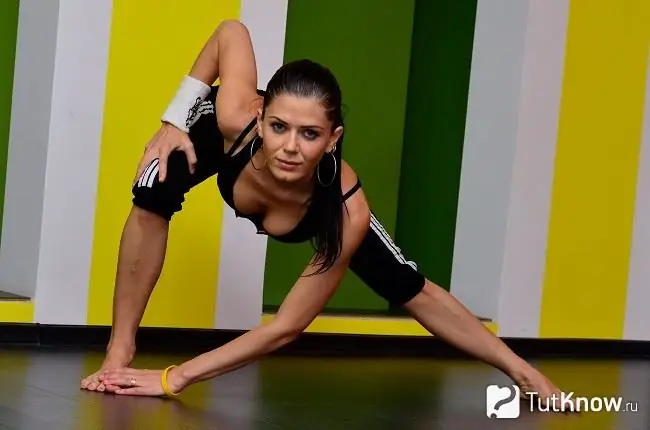Find out if it's worth going to the gym after a hard workout when severe muscle pain is present. If you experience mild pain after training, then there is no need to be afraid of this. This fact suggests that muscle tissue grows and muscles become stronger. Very often, novice athletes are interested in if their muscles hurt after a workout, can they do it.
It is always difficult to take the first step in any business. If you have started to play sports, then you need to get used to the new lifestyle and physical activity. It is quite obvious that even mild painful sensations do not give you enthusiasm, but this is the mechanism of adaptation to physical activity. They can appear even in experienced athletes, but beginners almost always feel them.
What is post-workout muscle soreness?

Painful sensations and discomfort that appear a day or two after the training, doctors call a creature. For athletes, this is normal and everyone goes through it. Any physical activity for the body is stressful. If you have never played sports before, then the stress is quite strong.
Dyspnea can appear after a strong long-term effect on the muscles. During training, muscle tissue receives microdamage. In the places of these herbs, inflammatory processes begin to develop, which cause pain.
Experienced athletes take their appearance as a sign of effective training. However, novice athletes can get scared, after which there is a desire to find out if the muscles hurt after training, whether it is possible to exercise.
Causes of muscle pain

When you work out in a weighted gym, the muscles are actively contracting and constricting the blood vessels. It is quite obvious that in such a situation, blood cannot penetrate the tissues. Consequently, oxygen does not enter them either. To provide muscles with energy during strength training, the process of anaerobic glycolysis is used, which takes place without the participation of oxygen.
The result is a metabolite called lactic acid. Its amount directly depends on your training experience and in novice athletes it is synthesized in large quantities. Under normal conditions, lactic acid is excreted in the blood, but we have already noted that during strength training, blood flow in muscle tissues is hampered and the metabolite remains in the tissues until blood flow is completely restored.
The painful sensations caused by lactic acid appear only the next day, when the muscles cool down. At the same time, the pains are not acute in nature, but they cause discomfort and sometimes it can be quite difficult to even move a leg or arm. The answer to the question, if the muscles hurt after training, is it possible to train, is affirmative if the pain is not acute.
When an athlete experiences sharp pain, and especially at the time of the exercise, then the whole point here may be trauma. Most often they are associated with damage to the ligaments, and they can be obtained due to a careless sharp movement. The ankle is especially vulnerable in this regard. Unheated muscles are also often injured. To avoid this, it is always necessary to carry out a high-quality warm-up before starting the main part of the training. If, when pain occurs, you see redness or swelling on the skin and you want to know if the muscles hurt after training if you can train, then in this case the answer is no. In such a situation, it is worth contacting a doctor for possible injury.
Muscles ache after exercise: is it possible to exercise?

Actually, we have already answered your question, if muscles hurt after training, is it possible to train. If the pain is not strong, then you not only can, but even need to exercise. However, the next session should be less intense and deliberate.
Since you have sore throat, athletes often say that the muscles are clogged, then you need to keep them in good shape. Sometimes it is even necessary to practice through force, the current as a discomfort can be very unpleasant. If this is not done, then after the next lesson you will again experience pain.
However, you should be mindful of rest as well, as excessive exercise can lead to overtraining. If you trained a specific muscle group and after that pain began to appear, then the next lesson should be of a general nature. Simply put, you should load all the muscles in your body, but not as intensely as last time.
Pay particular attention to stretching your muscles. You can do Pilates, yoga, or go for a run. If you have been training for a long time and after the lesson you experience dizziness, then we can say that those muscles that you had not previously pumped were involved in the work. This may be due to a change in the training program. If after training you do not see progress, and the muscles do not react in any way to the load, then they have already adapted to it. This fact suggests that you urgently need to change something in your training process. More often than not, it is enough to increase the load. However, if you have been using the training program for a long time, then it is worth making small adjustments to it.
Novice athletes should remember that the body will not respond well to strong loads. It is very important to dose them correctly so as not to harm your health. How to do this, we will now find out.
How can you reduce pain after class?

In order for each lesson to be as effective as possible, and the muscles have time to fully recover, it is necessary to correctly approach the preparation of a training program. To do this, you should adhere to several rules, which will be discussed now. With their observance, the question of whether the muscles hurt after a workout is it possible to train, you will not have.
Let's start with the frequency of the classes. If you exercise every day, then your body will not have time to recover. This will lead to premature wear and tear of the body, which should not be allowed. You should always be concerned about your health. Only moderate physical activity can be healthy. Thus, classes should be held every second day. This time will be enough for your muscles to recover, and they will not lose their tone.
Each workout must necessarily begin with a warm-up. This is extremely important, because unheated muscles can be easily injured. You can use a treadmill for this, swing your limbs, and also work with a rope.
It is also very important to alternate loads, focusing on different muscle groups. For example, in the last lesson you trained your chest, then today you can pay attention to the legs, and in the next workout - to the back. This approach to building the training process is the most effective, and you will quickly achieve your goals. We have already said that muscles adapt to stress. Actually, it is thanks to this that the adaptation processes are taking place. In order to constantly progress, each new training must be slightly more difficult. However, the load should progress systematically. We recommend that you increase your working weights by no more than 10 percent weekly. This is enough to force the muscles to adapt to new physical activity.
How to eliminate muscle pain?

Since the main cause of muscle pain after training is lactic acid, it is necessary to remove it from the muscle tissue in a short time. We have already said that this is possible due to the normalization of blood flow. Lactic acid is quickly excreted and this metabolite can no longer be the cause of pain that appears a few days after training.
Massage is an excellent remedy to normalize blood flow. A hot bath followed by a cold shower can also help. Remember to drink water throughout the day, including during class. We have already mentioned the need to warm up, but you should also do a cool down.
Stretching the muscles well after the main part of the workout will restore blood flow faster. Antioxidants, for example, vitamins C, E, or A, can also be very useful in this situation.
Certain foods, such as fruits and vegetables, can also be helpful in reducing and even completely eliminating soreness. Moreover, they should be consumed with the peel. You can use decoctions of some herbs, for example, chamomile, licorice, St. John's wort, linden. They can be taken even during class. Most professional athletes go to the pool after training. Swimming perfectly relieves tension from the muscles and the spinal column.
In conclusion, I would like to say that pain in the muscles can also be negative. With dyspepsia, pain is felt during movement, but if it persists even when you are at rest, then you may have been injured.
Novice athletes often make serious mistakes when they experience muscle pain. Some people stop exercising until the discomfort goes away. As a result, the previous lesson loses its effectiveness and you have to start all over again. Another group of novice athletes continue to train intensely through pain, which is also a serious mistake. You should approach the construction of the training process competently, and try to use the services of a trainer who will select the optimal loads for you and draw up a training program.
Is it possible to train muscles if they hurt after the last workout, says Denis Borisov:






